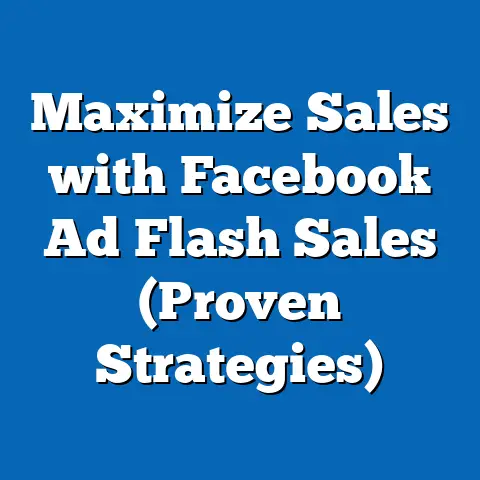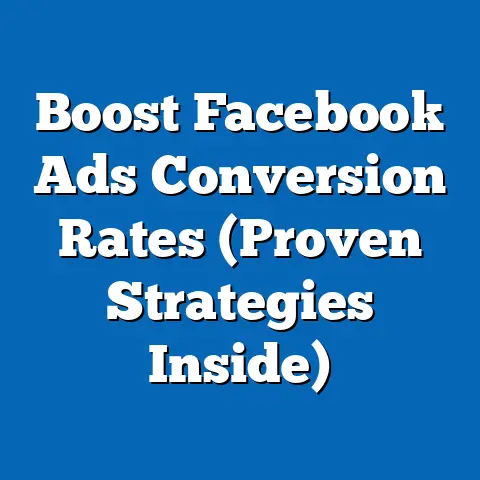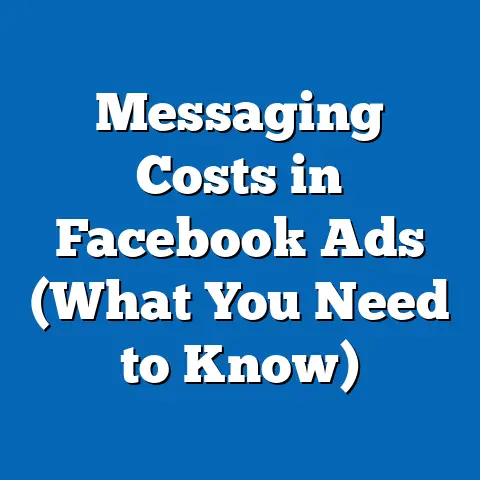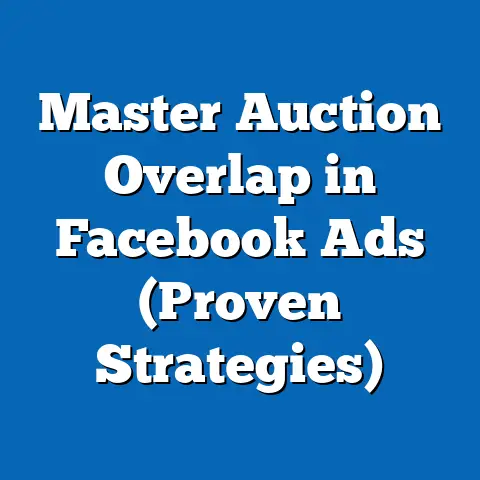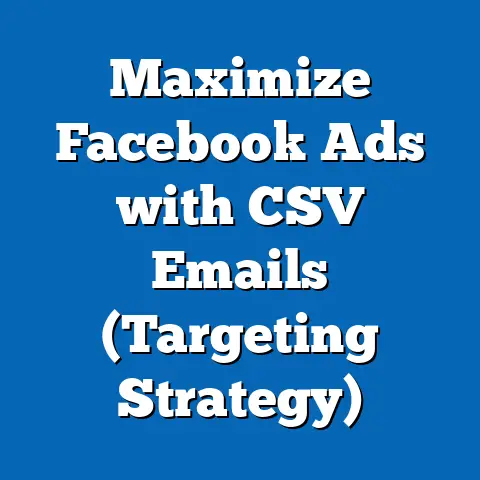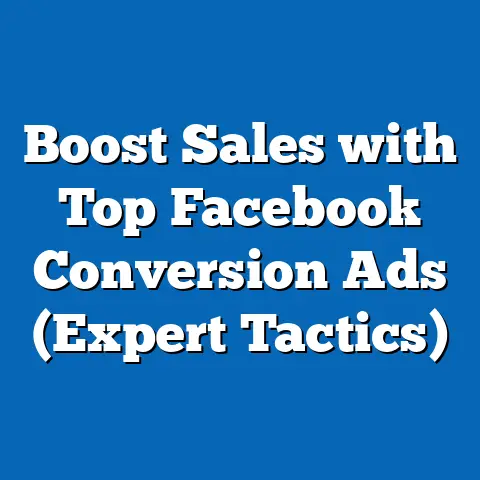Does Changing Audience Reset Facebook Ad Optimization? (Key Insights)
It’s a question I’ve heard countless times in my years of running Facebook ad campaigns: “If I change my target audience, will Facebook reset the optimization and make me start all over?” It’s a valid concern. After all, we pour time, effort, and money into optimizing our ads, and the thought of losing that progress can be daunting. Many marketers operate under the assumption that any change to the audience settings completely wipes the slate clean, leading to wasted ad spend and frustrating results. I’ve even seen teams avoid necessary audience tweaks for fear of disrupting their hard-won optimization. This belief is more widespread than you might think, with some studies estimating that over 60% of marketers worry about this “reset” effect.
But is this fear justified? Does altering your audience settings really send your Facebook ad campaign back to square one? The answer, as is often the case in the world of digital marketing, is nuanced. It’s not a simple yes or no. Understanding how Facebook’s ad algorithm works in relation to audience changes is crucial for effective campaign management. So, let’s dive deep and debunk some myths, clarify the realities, and learn how to navigate audience adjustments without derailing your optimization efforts.
Understanding Facebook Ad Optimization
Facebook ad optimization is the process of refining your ad campaigns to achieve the best possible results for your chosen objective. It’s about ensuring your ads are seen by the most relevant users, those most likely to take the desired action, whether it’s making a purchase, signing up for a newsletter, or simply engaging with your content. I think of it as a continuous cycle of testing, analyzing, and tweaking to maximize your return on investment (ROI).
At the heart of this process lies the Facebook ad algorithm, a complex system powered by machine learning. This algorithm analyzes vast amounts of data to predict which users are most likely to respond positively to your ads. It considers factors like:
- User demographics: Age, gender, location, education, etc.
- Interests and behaviors: Pages liked, groups joined, activities performed on Facebook and Instagram.
- Past ad interactions: Which ads users have clicked, liked, shared, or converted on.
- Ad performance data: Click-through rates (CTR), conversion rates, cost per acquisition (CPA), etc.
The algorithm uses this data to constantly refine ad delivery, showing your ads to the users it believes are most likely to convert. It’s a dynamic process, always learning and adapting based on user behavior and ad performance. This is why I always tell my clients that setting up a campaign is only half the battle. The real magic happens in the optimization phase.
Facebook offers various optimization objectives, such as:
- Conversions: Optimize for users who are likely to complete a specific action, like making a purchase or filling out a form. This is generally my go-to when I am running campaigns for e-commerce clients.
- Link clicks: Optimize for users who are likely to click on the link in your ad. This is more commonly used for driving traffic to blog posts or informational pages.
- Impressions: Optimize for showing your ad to as many people as possible. This is typically used for brand awareness campaigns.
Each objective tells the algorithm what you want to achieve, influencing how it targets users. Your audience targeting plays a crucial role here. The more specific and relevant your audience, the better the algorithm can optimize for your chosen objective.
It’s also worth mentioning the “learning phase.” When you launch a new ad set or make significant changes, the algorithm needs time to gather data and learn which users are most responsive. During this phase, performance may fluctuate as the algorithm explores different targeting options. Facebook recommends getting at least 50 conversion events within a 7-day period for your ad set to exit the learning phase. I personally aim for at least that much to ensure I have enough data for the algorithm to properly optimize.
Takeaway: Facebook ad optimization relies on a complex algorithm that learns and adapts based on user behavior and ad performance. Understanding the algorithm and choosing the right optimization objective are crucial for success.
The Impact of Changing Audience Settings
So, what actually happens when you tweak your audience settings? Does it trigger a complete reset of the algorithm’s learning? Let’s break it down.
The impact of changing audience settings depends on the nature and extent of the change. A minor adjustment, like adding a new interest or excluding a specific demographic, may have a minimal impact on the algorithm’s learning. The algorithm can often adapt to these changes without significantly disrupting performance.
However, a more significant change, like completely replacing your audience with a different demographic or interest group, can have a more substantial impact. In this case, the algorithm essentially needs to re-learn which users are most likely to respond to your ads. Think of it as teaching a student a new subject – they need time to grasp the fundamentals before they can excel.
It’s also important to differentiate between changing audience segments within an existing ad set versus creating an entirely new ad set. If you simply modify the audience within an existing ad set, the algorithm can often leverage its previous learning to adapt to the new audience. However, if you create a new ad set with a completely different audience, the algorithm will treat it as a brand-new campaign and start the learning process from scratch. I personally like to test new audiences by creating a separate ad set so that the algorithm can learn the behavior of the audience from scratch.
Broadening or narrowing your audience can also affect optimization. Broadening your audience gives the algorithm more users to target, potentially leading to increased reach and lower costs. However, it can also dilute your targeting and reduce the relevance of your ads. Narrowing your audience, on the other hand, can increase relevance but limit reach and potentially increase costs.
Facebook’s own guidelines state that “significant changes to your ad set can reset the learning phase.” These changes include:
- Significant changes to targeting: This includes major changes to demographics, interests, or behaviors.
- Changes to creative: Replacing your ad creative with completely different images or videos.
- Changes to bidding: Switching from automatic bidding to manual bidding, or making significant changes to your bid amount.
I’ve personally experienced this “reset” effect when I made drastic changes to my targeting after a campaign had been running for a while. The initial performance dipped, and it took a few days for the algorithm to re-optimize for the new audience. However, with careful monitoring and adjustments, I was able to get the campaign back on track.
Takeaway: The impact of changing audience settings depends on the nature and extent of the change. Minor adjustments may have minimal impact, while significant changes can reset the learning phase.
Common Misconceptions and Realities
Let’s address some common misconceptions about audience changes and their impact on Facebook ad optimization.
Misconception #1: Any change to the audience resets the optimization.
Reality: As we’ve discussed, this isn’t always the case. Minor adjustments can often be accommodated by the algorithm without significantly disrupting performance.
Misconception #2: It’s always better to create a new ad set than to change the audience in an existing one.
Reality: Creating a new ad set means starting the learning phase from scratch. If you’re simply making a minor adjustment, it may be more efficient to modify the audience in your existing ad set.
Misconception #3: Broadening my audience will always improve performance.
Reality: Broadening your audience can increase reach, but it can also dilute your targeting and reduce relevance. It’s important to strike a balance between reach and relevance.
Misconception #4: The learning phase is always a bad thing.
Reality: The learning phase is a necessary part of the optimization process. It’s an opportunity for the algorithm to gather data and learn which users are most responsive to your ads. Embrace the learning phase and use it as an opportunity to test different targeting options.
I’ve seen marketers avoid necessary audience tweaks because they fear disrupting their hard-won optimization. This is a mistake. The key is to understand how the algorithm adapts to changes and to make informed decisions based on data.
Facebook’s algorithm is designed to be resilient and adaptable. It can often adjust to audience changes without completely resetting the optimization process. However, it’s important to monitor performance closely after making any changes and to make further adjustments as needed.
Takeaway: Many common beliefs about audience changes are misconceptions. Understanding the realities of how the algorithm adapts to changes is crucial for effective campaign management.
Best Practices for Audience Management and Optimization
Based on my experience, here are some best practices for managing your audience settings and optimizing your Facebook ad campaigns:
- Start with a well-defined audience: Before launching your campaign, take the time to research and define your target audience. Consider demographics, interests, behaviors, and other relevant factors. The more specific and relevant your audience, the better the algorithm can optimize for your chosen objective.
- Make incremental changes: Avoid making drastic changes to your audience settings all at once. Instead, make small, incremental adjustments and monitor performance closely. This allows the algorithm to adapt gradually without significantly disrupting performance.
- A/B test your audiences: Use A/B testing to compare the performance of different audiences. Create multiple ad sets with slightly different targeting options and see which ones perform best. This can help you identify the most responsive audiences for your ads. A/B testing is the backbone of any Facebook Ads campaign, and its importance cannot be overstated.
- Monitor performance closely: After making any changes to your audience settings, monitor performance closely. Track key metrics like CTR, conversion rate, and CPA. If you see a significant drop in performance, consider reverting to your previous settings or making further adjustments.
- Document your changes: Keep a record of all the changes you make to your audience settings and the corresponding impact on performance. This can help you identify patterns and make more informed decisions in the future. I like to keep a detailed spreadsheet of the changes I make, the date I made them, and the results I saw.
- Use Lookalike Audiences: Once you’ve identified a high-performing audience, create a Lookalike Audience based on that audience. Lookalike Audiences allow you to target users who are similar to your existing customers, expanding your reach while maintaining relevance. I’ve seen Lookalike Audiences consistently outperform other targeting options.
- Leverage Custom Audiences: Use Custom Audiences to target users who have already interacted with your business, such as website visitors, email subscribers, or app users. Custom Audiences are highly relevant and can be a great way to drive conversions.
- Continuously refine your targeting: Audience management is an ongoing process. Continuously analyze your data and refine your targeting based on performance. The more you learn about your audience, the better you can optimize your campaigns.
Takeaway: Following these best practices can help you manage your audience settings effectively and optimize your Facebook ad campaigns for maximum results.
Conclusion
So, does changing your audience settings reset Facebook ad optimization? The answer is a nuanced “it depends.” Minor adjustments may have minimal impact, while significant changes can reset the learning phase. However, the algorithm is designed to be resilient and adaptable, and it can often adjust to changes without completely starting from scratch.
The key is to understand how the algorithm works, to make informed decisions based on data, and to follow best practices for audience management and optimization. Don’t be afraid to experiment with different targeting options, but always monitor performance closely and be prepared to make adjustments as needed.
By rethinking your approach to audience management and embracing the complexities of Facebook advertising, you can unlock the full potential of your ad campaigns and achieve your business goals. The world of Facebook Ads is constantly evolving, and it is key to stay informed and adapt as the platform evolves.
Call to Action:
What are your experiences with changing audience settings in Facebook ad campaigns? Share your insights and tips in the comments below! Let’s learn from each other and build a community of informed and effective Facebook advertisers.

